Rock Climbing Techniques: Step-By-Step Instructions for Beginners
Although it may seem dangerous, rock climbing is a fun and challenging sport which has quite many fans. It involves a specific initiation, physical and mental effort and also qualities such as agility, balance and discipline. Of course, those who decide to join, must learn certain rock climbing techniques in order to follow a particular route as people don’t have the native ability for climbing.
[the_ad_group id=”21″]
In this sport, it is very important to move efficiently, with the minimum energy consumption. In order to learn these techniques, one should keep in mind that he or she has to offer hard work, patience and dedication for this activity.
Before moving on to the training itself, it’s good to transform yourself into a good observer: to watch other climbers, to study their movements, to ask about what you see and only then you can begin to apply what you saw. But let’s see the basic things you should keep in mind when you learn.
Technical Training
At first you just need to practice indoor climbing by going to the gym.
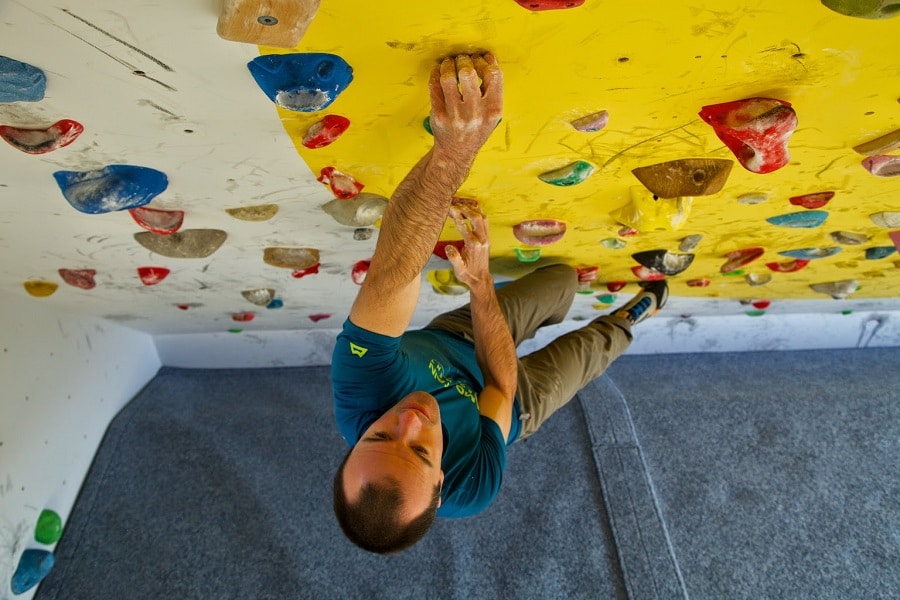
It is a safe and easy way to learn how to rock climb. At the gym, you can use artificial walls with various routes of a different difficulty degree. So, to learn faster, you need to pay attention to the following aspects:
- Climbing equipment. To begin with you will need only a minimum of equipment consisting of a pair of shoes and a chalk bag. Climbing shoes must be snug so you will be able to feel any edge of the rocks. The chalk is necessary to use because your hands must remain dry during climbing. Check out our expert reviews of the top approach shoes to help you.
- Warming up. Before you start training, you need to warm up your muscles and tendons, so you can avoid any problems such as sprains or muscle ruptures. You need to correctly execute some physical exercise for about 30 minutes in order to be ready for climbing.
- Examining the wall. You don’t have to get climbing on the wall until you see it well. You have to anticipate all the movements in your mind, to memorize their order, to establish a place where you can rest. Also, you must observe dangerous places, where you can slip and even fall. The holds should be checked as well to make sure they are safe. Their size isn’t a good enough criterion: often big holds can detach and cause accidents.
- The rule of the three points support. While learning how to rock climb, it is necessary for the climber to have constant contact either with both hands and one foot or both feet and one hand. In this way, he can seek the fourth hold, and when he ensures that he has found it, he can raise one leg to put it on another hold.
- Use more your feet than your arms. Another basic climbing rule is that the climber should use more his legs, which are more powerful, and less his hands, which have less power. Your arms should be extended, while the legs should be opened so as to achieve an optimum balance.
Using climbing holds
While climbing, you must keep the contact with the wall or with the rock by using climbing holds. In this way you alternatively distribute the body weight, so you can move your body. The climbing quality depends on the way you use the different types of climbing holds.
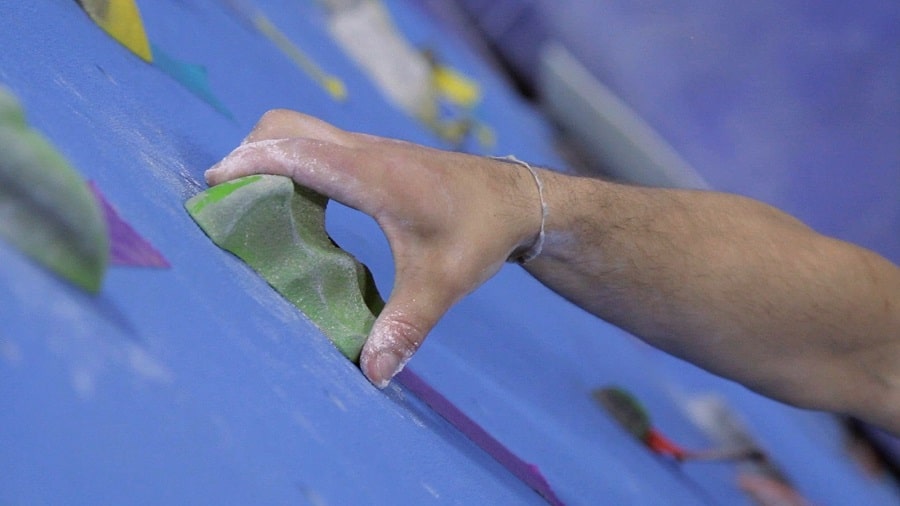
To efficiently use the holds, you must first search for a good one. Then you should use the most useful part of it, and after that you should put your foot or hand on the chosen place. The climbing holds have many different size and shapes and each category must be well-known by the climber because he will use them in different ways. For instance, on flat holds, you will put the front part of your sole while your heel should be lowered to obtain a larger contact surface. On the other hand, on the narrow holds, you will use the sides of the sole, while trying to raise your heel. But let’s see the main types of rock climbing:
- This kind of rock climbing holds are easy to use because they are quite large and don’t involve much energy to grab. They do not require a special technique to be used and are often preferred by the beginners.
- These are round holes in which you can put one, two or three fingers to grab. When you encounter a pocket to your route it is essential to know what finger or fingers to use. In general, you should use your strongest fingers, so that you can get a good grip.
- They are quite difficult for beginners, because they don’t have any edge or lip, so you can’t obtain a direct grip. The only way to efficiently use this type of climbing hold is to get a large surface of it, so that the friction obtained between the hold and the hand to keep you from falling off.
- These are vertical and narrow holds which are much alike slopers. In order to get a nice grip you have to put your thumb on one side of this hold and fingers on the other. This type of hold involves a great strength to use and they are recommended for the advanced climbers.
- Crimps. They are small holds which can be grabbed using the tips of your fingers. It is easy enough for a beginner to accommodate wit this type of climbing holds.
- Their name comes from the French climber Gaston Rebuffat and they are vertically or diagonally oriented climbing holds. It is not very easy for a beginner to use a Gaston because this involves a certain difficulty degree and a few steps to follow.
Breathing techniques
It is very important for a climber to know how to breathe while climbing. A proper way of breathing helps both his movements and his mental state. In order to use your breathing in a correct and efficient manner, you need to train yourself for that.
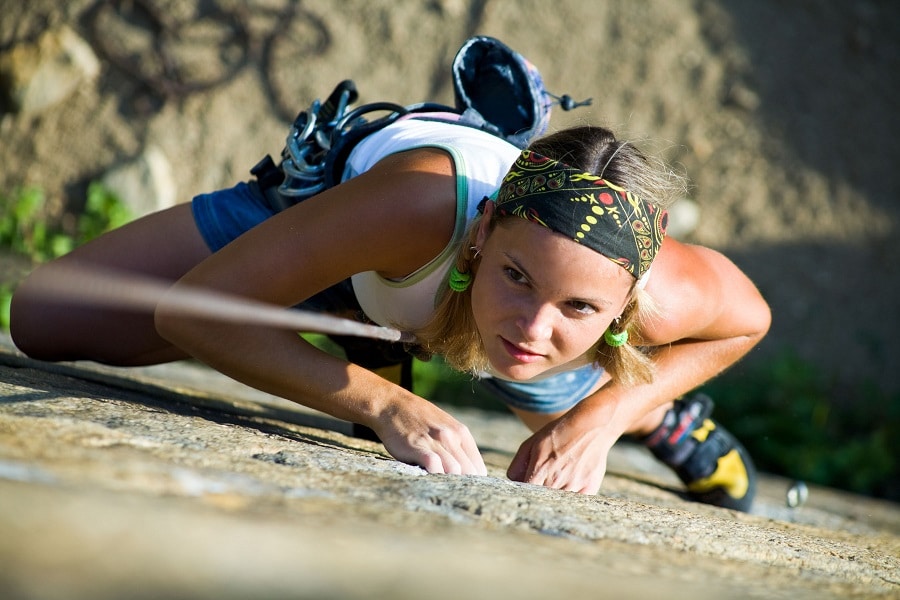
Why is this necessary? Because while climbing, if you don’t breath in a certain way, your brain and your body won’t be oxygenated enough and this will slow down your physical effort. Let’s see what you need to know about breathing while climbing.
- Breathing has both a physiologic and a psychological role, and we can benefit from these aspects. There is a strong connection between our mental state and our breathing rhythm and this connection becomes more evident when we are in a stressful situation, for instance. You need to control your breathing so that to keep it slow and profound, because only in this way you will maintain a good state of mind.
- Insecurity and fear can be also eliminated by adopting a proper way of breathing. If you choose to focus on your breathing, you won’t think that you are scared or that you have a difficult route to follow. Your mind is not able to focus on two things at the same time and if you are concentrated on the way you breathe, you keep your mind busy, so that it wouldn’t think of the stressful situation you are in.
- Breathing is also useful to establish your movements’ rhythm. If you breathe in a correct manner, you will get a good connection between your mind and your body and this will better control the way you move.
- While climbing, you must avoid keeping your breathing because an irregular breathing may affect your movements’ rhythm and the proper muscle oxygenation. In this way your performance will certainly slow down.
- In order to get used to breathing correctly, you can train yourself during some easy routes.
In these situations you won’t need to pay too much attention to your moves, which are rather easy to make, and you will be able to stay focused on your breathing and control it.
[the_ad_group id=”22″]
If you constantly practice the breathing exercise, it will become a usual habit and you won’t need to impose it on yourself anymore.
Outdoor Climbing
After you have learned some climbing techniques by going to the gym, have studied the main type of holds and are able to control your breathing, it is time for another level – outdoor climbing.

But, before that, there are some things you should keep in mind:
- Climbing equipment – Outdoor rock climbing requires safety. If for the indoor climbing you didn’t need too many things to climb the wall, with outdoor climbing the things are rather different. Firstly, you will need a pair of climbing shoes. These are special shoes, with a rubber sole which protects your foot from rough rocks and offer you a better friction. Another piece of climbing equipment is a climbing rope that will stop you from falling. It must be made of nylon fibers and usually is fifty meters long. You will also need carabiners, which are rings made of aluminum and have a special gate where you can open them. The harness is what you need in order to attach yourself to a rope. This is made of a nylon belt and a pair of leg loops. Protection devices are also important in rock climbing. They can be passive or active and are used depending on the rock type.
- Remember that climbing involves a flexible body, a good sense of equilibrium, an excellent orientation, strong technical skills and the power to react properly in dangerous situations. Before you start climbing, it is necessary for you to observe the route anticipating every step and also to check, as much as you can, the safety of the holds and equipment.
- Of course you will have an experienced climber next to you all the way, who will remember you anything you should do, who will help you with the equipment and with the use of the holds. However, you shouldn’t forget that in climbing there are some basic rules such as the rule of the three points support. Also, you must use more your feet than your hands, you should look for the most appropriate hold and you must keep your feet opened in order to get more balance.
- The state of mind is very important because climbing involves a lot of tension and it is necessary for you to stay as calm as you can. For that, you should use the breathing exercise which will help you both physically and mentally.
- Remember how to use the holds. The most of the climbing holds require to use them as if you would climb on a scale, but there are also some other ways to grab the holds. In time you will know them all.
- An important process for somebody who wants to learn how to rock climb is belaying. This means that you will have somebody below with a rope and this person is going to catch you if you fall. You will have to learn how to tie using the harness, which must be snug across the waist and thighs. There are many other things regarding this process, but you will get them with time, don’t worry!
See also: Best Ice Axe: Piolet d’Or In Your Backpack
Tips and Techniques for A Successful Climb
At first, you will only use simple climbing techniques, but with time you will be able to improve your movements in order to be more satisfied with your climbing activity.
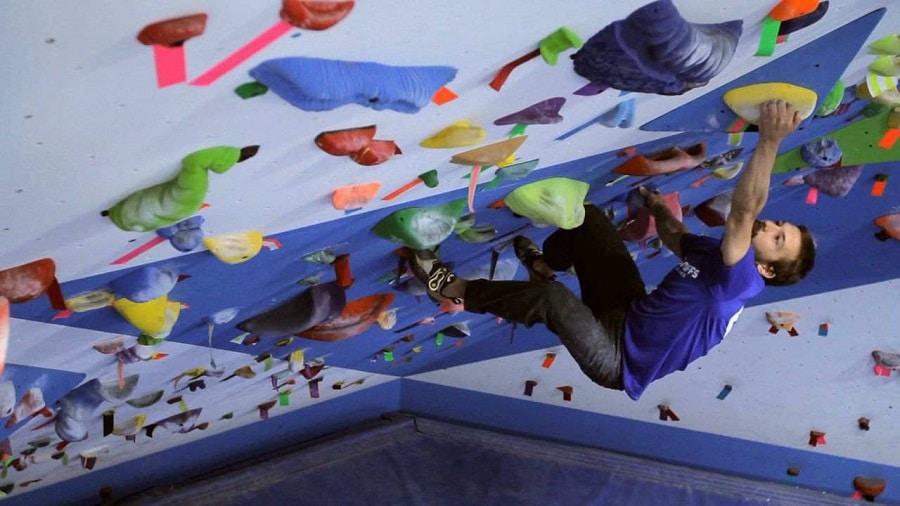
Here are some tips and techniques which you may use in order to obtain a better performance:
The Static climbing technique
This is one of the best climbing techniques and follows this order:
- arms and legs movement,
- body movement,
- repeating points 1 and 2.
You need to avoid moving your body and limbs at the same time. You must use your arms to maintain your balance and your feet to sustain your body weight. This technique involves discipline regarding your every move. You must study your every step, listen to the noise your legs make while you are climbing, find the best foothold, and only after that decide to put your foot on it.
Make sure that you have mastered tying all those knots. Check out our piece on how to tie knots that can help you in climbing.
The dead point technique
This technique is very useful to improve the dynamic of your climbing ability. This happens when you can’t reach a hold in a static fashion. Your feet should be planted on good holds and then you should lunge upward towards handholds.
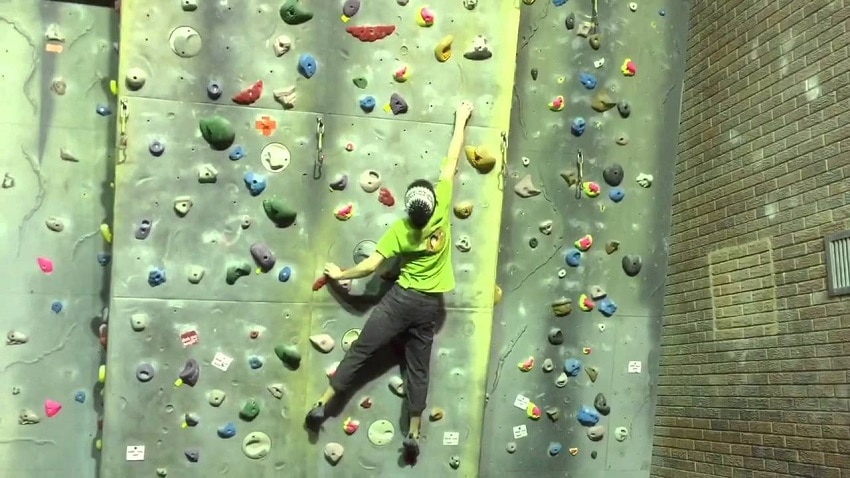
For a moment you will be flying upward. Next, you will grab a hold at the apex of the jump. Your movement must be smooth, fast and efficient. “The dead point” involves gymnastic moves and helps the climber save a lot of energy.
Tips on how to improve your technique
- A relaxed grip. It is essential for you to have flexible moves and to avoid tension and rigidness. Your back and shoulders must stay relaxed because otherwise your climbing speed and performance will slow down. From time to time, you should stop and think how you can better use your muscles and strength and also how to relax.
- Good places to rest. It is also very important to discover those places where you can stand for a few moments to rest. You must allow this to yourself to every three meters and for doing this, you should notice the rest point before climbing.
Overcome The Fear of Falling
Climbing also involves falling. A good climber should know how to fall. This is why an essential part of climbing is to practice falling. It will help you trust the belay system and will teach you how to relax your body.
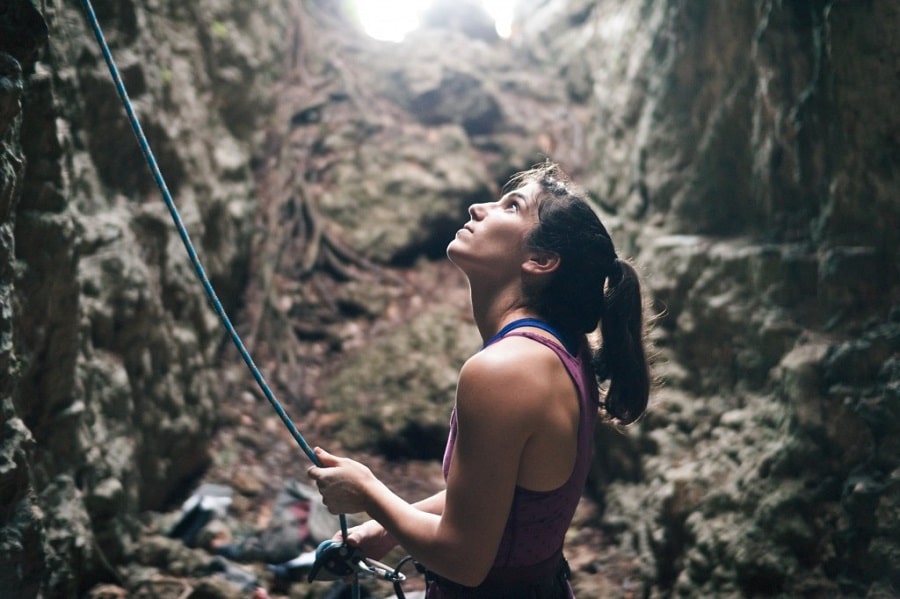
Firstly, you should practice falls in a safe place, at the gym, for instance. You need to use good climbing equipment and ask an experienced climber to help you. You will start with some short falls, and then you will climb a little higher. These short and medium falls must be practiced once or twice a week in order to step to a higher level.
There are a few things to remember regarding falls:
- First, warn your belayer that you are going to fall,
- Second, look down to spot the obstacles,
- Breathe in order to relax and to keep your arms up for balance.
- You should never fall having the rope behind the foot or leg
- And finally, you shouldn’t push off any rocks while falling.
At the end, we only wish you good luck with your rock climbing experience! It isn’t an easy practice, but it is fun and challenging. It may involve a lot of things to keep in mind, but by practicing them as often as possible, you will get to know them perfectly.
[the_ad_group id=”23″]
In climbing it is very important to have the right attitude. Climbers should learn not to give up in front of problems (that will arise on the way) and they must stay focused on the present moment. Giving into fear and panic is never the answer which is why you should learn and practice the breathing techniques we discussed earlier.
How’s your climbing experience? We would love to hear about the techniques you like the most and how you learned to climb.


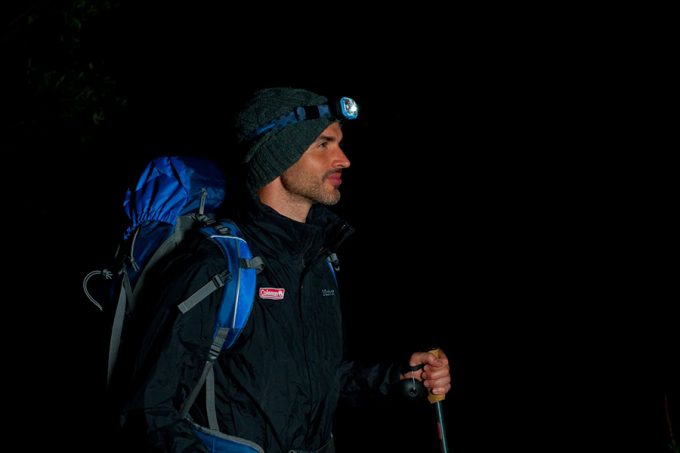
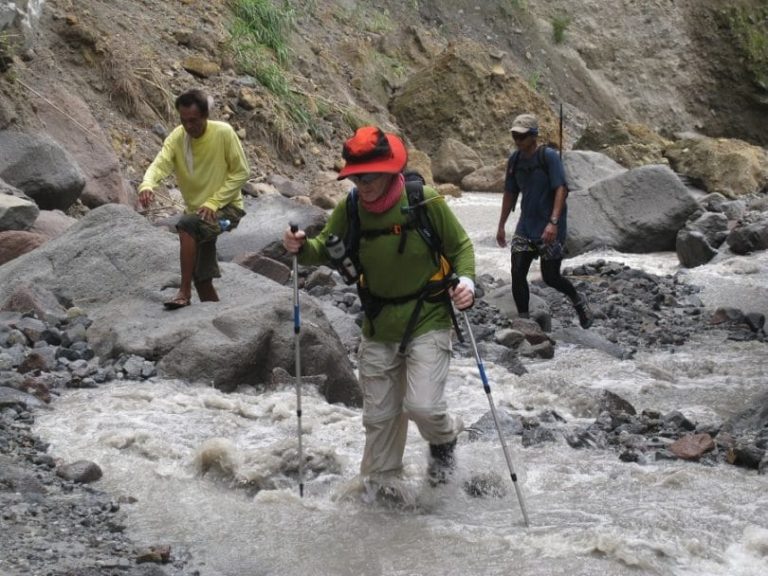
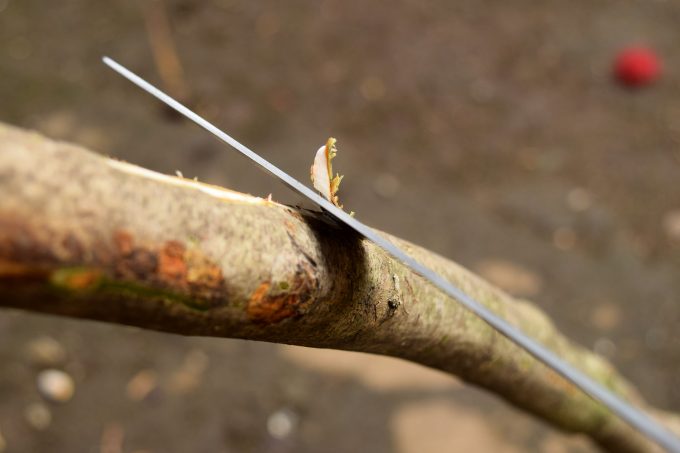

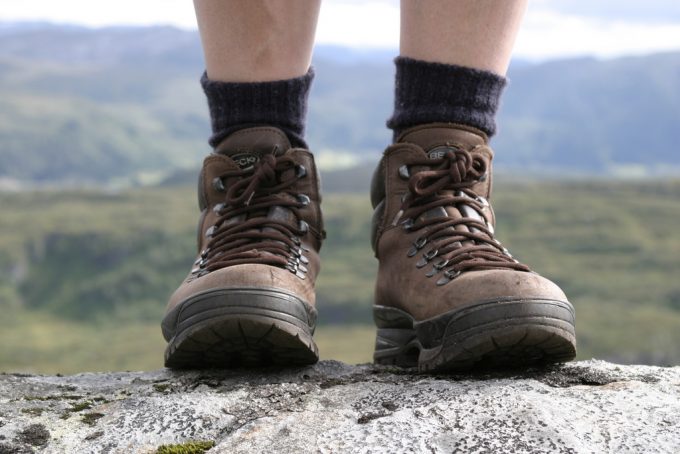
Fear of heights is a common fear at the beginning. Most climbers are naturally worried if they are at altitude and does not cling reliably. Any climbing instructor will explain to you that being in street shoes on a slippery grass with a large slope is much more dangerous than staying at any height in full climbing gear. Good gear can withstand the weight many times greater than your own, and its correct use will allow you to climb as high as you want and feel safe.
So don’t worry and good luck!
Rock climbing requires a great deal of concentration regardless if you’re climbing casually or as a a competitive enthusiast, there is no room for distraction (or become easily distracted) because it can seriously cause injury or even your life.
Practice makes perfect! Climb lots, and don’t forget to do stretching before climbing. It is important that your body is in condition before climbing. For starters, spend a bit of time with a hangboard and do some pullups. And most important thing is to face your fear of heights.
I agree, Joseph. rock climbing will require dedication and persistence to be able to reach greater heights. You don’t have to stress yourself by tackling a pro-level climb. Starting small and accomplishing it will work far better than not completing harder ones.
When I started rock climbing, I actually climbed only one day a week. I thought a lot of bodybuilding would work, but it did just to a certain extent. My colleague advised me to try modified crossfit-style weight training and I found it much more efficient. Those types of full-body exercises improve aerobic capacity if they’re done at right intervals. I mostly focus on legs and shoulders and flexibility and my performance is getting better every day.
I agree with this method, Paul. It is not just about establishment of viable muscle mass, it is also about endurance and flexibility because you will need these things when tacking challenging locations. It also makes your body more prepared for the demanding climbs, and allows you to reach significantly greater heights without losing a lot of energy.